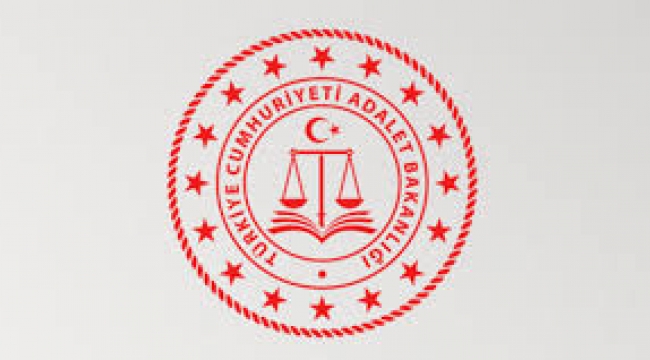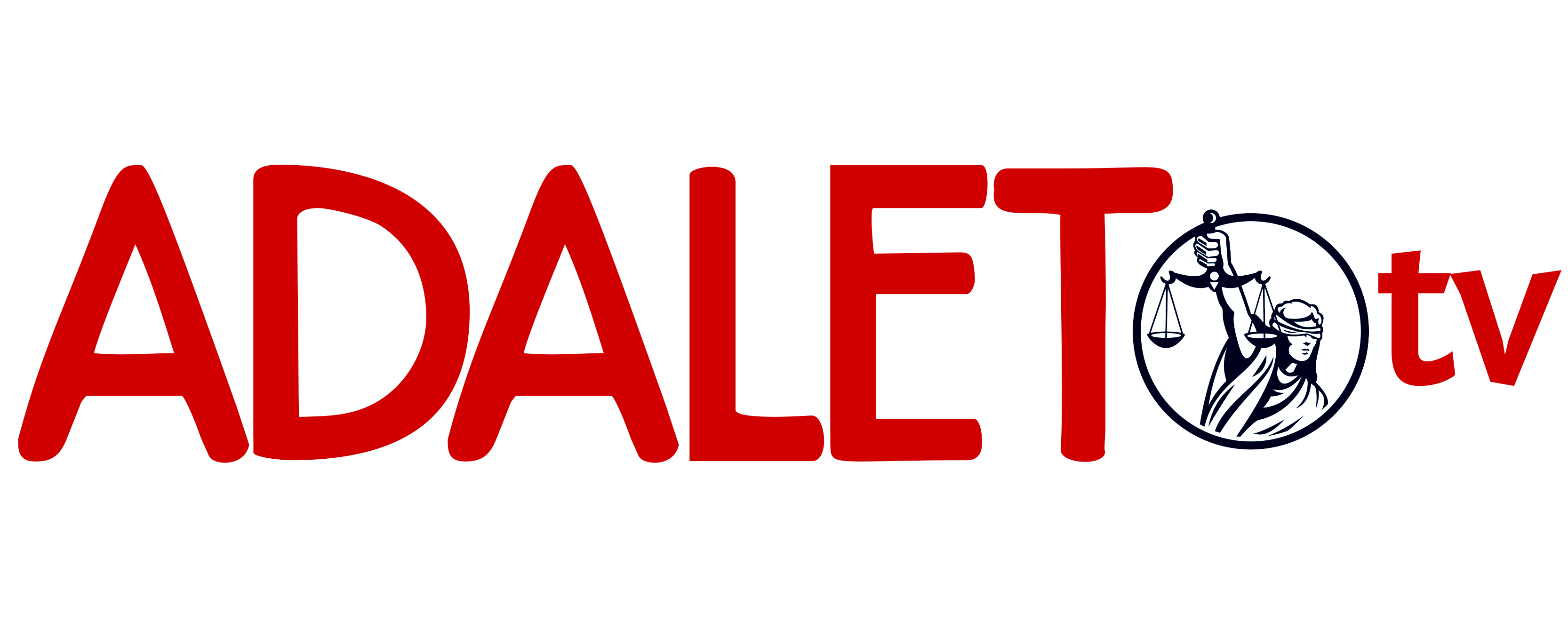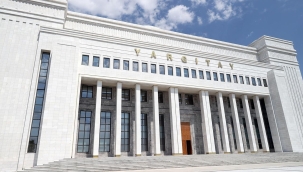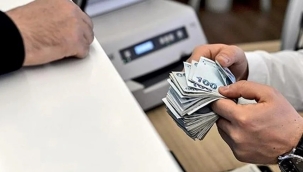The Latest Develepments of Turkish Enforcement System
The studies in punishment and execution field continue to help convicts and detainees so that they live a responsible life towards themselves and society when they are released.

Editör: adalet.tv
05 Eylül 2020 - 15:59
PRISONS
Introduction
Being the places where people sentenced to deprivation of liberty are detained, penal institutions are the living places that need to be watched closely and inspected continually by official and unofficial people and institutions. Remarks and recommendations in the reports prepared through inspections and investigations are evaluated as catalysts and guidelines for reform processes in punishment and execution field.
As of 2000s, our country has been satisfying on a large scale The United Nations and European Council's standards for the terms of punishment and execution; nevertheless, it still needs further efforts into the issues like overcrowding. However, overcrowding problem of penitentiaries has decreased to a large extent thanks to the recent amendments, innovations and developments in the alternative measures to custody and detention, and efforts directed at increasing prison capacities.
It is important to state that one of the greatest results of the works done in punishment and execution field is the decline in convicts and detainees’ ' claims about torture and ill treatment. . This is mostly due to the rise in the recruitment of more qualified staff, staff trainings in penitentiary system, which are mainly in human rights, and the judiciary and administrative investigations of torture and ill-treatment cases through efficient inspection mechanisms.
1. General Statistical Information
There are a total of 130.615 prisoners in penal institutions as of 20 May 2013; 28.855 of the total number are detainees and 101.760 are convicts. 26.103 of the detainees are male, 1.398 are female and 1.354 are juvenile. As for convicts, 98.052 are male, 3.279 are female and 429 are juvenile;
While convicts constitute 78 % of the total number, detainees constitute 22 % of it;
Among all prisoners, drug abuse is the most committed crime, which is 23 %. Theft is the second frequent one, being 19 % of all crimes. Plunder corresponds to 16 %. Assault and battery, the fourth frequent crime, makes 14%. Sex crimes are 10 % of all crimes and terror constitutes 8 % of them. Forgery, fraud, attempted murder and procurement of prostitution are relatively less committed crimes; 4, 3, 2 and 1 % respectively;
As an important improvement, while the number of convicts has risen from 86.566 to 101.760 between 2010 and 2013, the number of detainees has decreased from 34.248 to 28.855;
The decrease in the rate of detainees is a continuous and intentional one and this can be perceived more clearly when the rates of between 2000 and 2013 are compared. The rates of detainees was 49,8 %, which was almost the half of all inmates, but it has been 22,1 % in 2013;
To give specific information on female offenders; homicide is the most committed crime and attempted murder is the least committed one. As of May 2013, there have been 1.046 murders committed by women and 24 attempted murders. The most committed crimes subsequent to homicide are drug abuse, theft, terror, plunder, procurement of prostitution, battery, fraud and forgery;
Another specific improvement is the decline in numbers of deaths in prisons. For example, the number of deaths was 147 in 2006 but it is 42 in 2013;
When suicide rates in Turkish prisons are compared with those in European countries, that they are quite small is obvious;
2. Improvements in Physical Conditions
There are totally 359 prisons of six types in Turkey. 307 of them are closed type prisons, 41 are open type, 5 women closed type, 1 woman open type, 3 juvenile closed type and 2 juvenile reformatory houses;
Overcrowding is the primary problem of prisons. Rise in crime rates and penalties, effective methods of fight against crime and changes in conditional release terms are underlying this problem. As for the effects, it renders the staff, the living conditions, the training and rehabilitation programs, and healthcare and other services in prison insufficient. The issue requires both short-term and long-term solutions. While extra bunk-beds, transfers and construction of annexes can mitigate the problem, construction of new establishments, amendments and alternative measures to imprisonment are the virtual solutions.
One of the most important elements of the Prison Reform is building prisons in line with modern penitentiary conditions and closing the old and insufficient ones. Accordingly, campus type facilities, where juvenile, women and high security prisons are located, constitute an important model. In this respect, Ankara, İstanbul-Silivri, İstanbul-Maltepe, İzmir and Kocaeli Prison Campuses were built. The total inmate capacity of these campuses is 35.780. As these facilities have hospitals with sufficient medical equipment and social facilities, etc., they provide both prisoners and staff with many opportunities. Therefore, construction works for building campus type facilities in densely populated cities like Diyarbakır, Tarsus, Kayseri and Konya are continuing;
Although penal institutions’ capacities in 2009, 2010 and 2011 were insufficient for hosting the inmates, significant improvements achieved by the introduction of the new legislation and physical conditions provided a capacity of 147.752, only 130.615 of which has been occupied as of May 2013. Thus, there is no convict or detainee occupying the rooms out of capacity, excluding a few establishments where regionally proportional overcrowding issue is confronted. Replacement of the old and insufficient establishments with the new ones has brought forward an estimated rise in the capacity/occupancy proportion of prisons;
A capacity of 11.154 prisoners was reached in 2012 with 14 new open and closed type prisons. A capacity of nearly 20.000 prisoners will be reached by the end of 2013 with 34 open and closed type prisons to be opened. 51 new establishments will have been opened by 2014, which will provide an additional capacity of 26.000 people.
Within the improvements of physical conditions since 2002, a sum of 214 penal institutions have been closed due to non-compliance with modern penitentiary conditions or where there are not sufficient training or rehabilitation facilities or which cause waste of resources.
3. Training and Rehabilitation of Adult and Juvenile Prisoners
The fundamental aim of execution is defined in the Article 3 of Law No.5275 on Punishment and Security Measures as procuring general and specific crime prevention by strengthening the factors that prevent recidivism, protecting the society against crime, encouraging the convicts to re-socialize, facilitating convicts' adaptation to a life that is productive, responsible and respectful to laws and order. Educational, vocational, sports and socio-cultural activities are being administered to serve the aim mentioned.
A total of 15.521 social and cultural activities, both inside rooms and common living places, were realized in 2012 within the scope of rehabilitation of prisoners.
The educational studies cover literacy training within primary education for illiterate prisoners and prisoners with various levels of education are motivated to continue their trainings. Accordingly, 6.391 prisoners had literacy education in 2012. Besides, 4.841 prisoners registered for open schools and 6.101 prisoners registered for open high schools in 2012. Furthermore, 1.513 prisoners in total registered in universities, being open instruction faculties and formal education, and a total of 401 convicts and detained persons graduated from university.
Various vocational trainings are administered in penal institutions through trainer and material supports of İŞ-KUR (Turkish Employment Agency) and Ministry of National Education. Thus, a sum of 50.684 convicts and detainees attended 3.811 vocational training courses in 2012. Workshop activities also help the rehabilitation and post-release employment of prisoners. The 2012 rate of registered employment of released offenders who gained vocational skills in prisons is 38 %;
The support of universities and non-governmental organizations are appreciated to administer the vocational trainings and enhance their variety. To exemplify, 'Law Clinics' class was given by law students of İstanbul Bilgi University to the volunteer prisoners in Bakırköy Woman and Ümraniye E and T Type and Maltepe No.1 L Type Closed Prisons in 2012. Similarly, education activity has been implemented in Maltepe No.2 L Type and Silivri No.6 L Type Closed Prisons since February 2013.
Within the scope of 'Judicial Modernization and Prison Reform Project', 7 Offender Behavior Programs have been developed with the financial support European Union and technical support of European Council in order to administer systematic and structured works in penal institutions. These programs, which are Anger Management, Dealing with Alcohol and Drug Addiction, Raising Staff Awareness of Suicide and Self-Harm, Pre-Release Prisoner Progress, General Offending Behavior (Think First) Program, Sex-Offenders Program and CALM Program (Controlling Anger and Learning How to Manage It), were upgraded along the project titled 'Dissemination of Model Prison Practices and Promotion of the Prison Reform'. The trainings and practices of these programs are keeping on.
Practices of the program entitled 'Family Education for 0-18 Ages', which was developed by Ministry of National Education, are continuing in establishments. Within this program, the staff and the convicts who have children under18 are provided trainings to inform and raise awareness.
Furthermore, Bylaw on Rewarding Prisoners took effect on 30 March 2013 in order to enhance the rehabilitation of inmates;
What is more, The Protocol signed with The Presidency of Religious Affairs, which aims at supporting convicts' religious and moral development, was upgraded in February 2011 and the number of qualified chaplains to work full time in prisons has reached 452 since 1 February 2013. Thus, chaplains will be able to allocate more time to individual and group works for volunteer convicts or detained persons. These interviews are intended to raise the convicts' awareness of the damage and loss they caused, get them to regret committing crime, enrich their spirituality, promote their moral progress and thus prevent them from re-engaging in crime. Positive changes in prisoners' behaviors are clearly observed through these spiritual guidance services.
4. Improving the Conditions of Juvenile Detainees and Convicts
When their needs and high benefits are considered, the juvenile convicts and detainees' longer and better quality interviews with their families and relations are quite important. By virtue of Law No.6411, which took effect on 31 January 2013 and the Amendment to Article 83 of Law No.5275, the weekly open-closed interview duration which was maximum 1 hour for adults was lengthened to 3 hours for juveniles.
The Amendment (Article 51 of Law No.5275), also enabling juvenile convicts to interview with their mothers, fathers, guardians for a duration of 3-24 hours in the rooms allocated for these visits, was put in implementation after the Bylaw on Rewarding Convicts and Detainees took effect on 30 March 2013.
Within the attempts to re-integrate juvenile convicts with society, Ankara Juveniles Training House was closed in August 2012 as it could not satisfy the current needs. Instead, the new Juveniles Training House in Ankara Penal Institutions Campus, which has the necessary equipment for efficient implementation of rehabilitation activities, was opened on 26 August 2012.
Furthermore, the juvenile detainees in Bergama Penitentiary were transferred to recently opened İzmir Juvenile Closed Prison.
Attempts to improve the physical conditions of the detached juvenile establishments in Ankara, İzmir and İstanbul are continuing in accordance with the dissemination activities of the Group Leadership Implementation, which was piloted in Ankara Juvenile Closed Prison in 2010. It is planned that the project 'Justice For Children', the beneficiary of which is our General Directorate, will be extended in 2 years time to 20 establishments where juvenile convicts are densely accommodated. The system of Group Leadership is based on designing separate, well-equipped rooms where each juvenile convict stays alone at nights so that bullying and violence among them is prevented. Also, a staff member (group leader) who is trained in this implementation spends time with juveniles both in and outside the rooms and provides them guidance.
Apart from the Group Leadership Implementation, the Individualized Rehabilitation System for Juveniles (BISIS) was put in action in 2012. It is based on the OASIS Program implemented in Britain. BISIS was developed in 2008 and piloted in 2009. BISIS consists of 3 steps:
Risk analysis: First/starter step,
Individualized Rehabilitation Plan,
Rehabilitating environment.
BISIS depends on risk analysis. A risk assessment form with 160 questions is applied to juveniles. The questions are grouped in 3 parts, which are; 1.Criminal, family and socio-economic background, 2.Educational background, 3.Criminality. This risk assessment helps to determine the correct rehabilitation programs for each juvenile offender. BİSİS will be disseminated to 80 % of the juvenile establishments in 2014.
The attempts to provide special training for the staff working with juveniles are continuing; a total of 266 staff working in juvenile prisons were given ARDIÇ Training in 2012. This training aims at promoting the service capacity in issues like children's developmental periods, methods and techniques of communication with children, prevention of child abuse and negligence.
5. Staff
There have been both quantitative and qualitative improvements about the prison staff. First of all, the number of prison staff has increased;
The rise in the staff population has led to a bigger difference in the staff/prisoner proportion, which stands for improvement in prison security and enforcement services.
Staff trainings are also important regarding the improvement of prison and probation services;
From 2012 on, with the establishment of new training centers, all the new prison take a 5-month training before they are assigned. Before 2012, they would complete their trainings after they were assigned.
As the staff quality has improved through trainings and recruiting more qualified staff, the claims of ill-treatment in prisons have decreased;
6. Activities of Monitoring Boards
The monitoring boards paid 1.366 visits in 2012. Within the inspection reports, they made 423 recommendations on living conditions, 248 on physical conditions, 187 on staff, 138 on rehabilitation activities, 60 on healthcare and 120 on enforcement practices. 71,67 % of these recommendations were fulfilled in 2012;
7. Execution Judiciaries
Convicts and detainees have the right to complain to the execution judiciaries about any act or procedure of the administrations in their establishments. The complaints to execution judiciaries are mainly about discipline punishments, release, contact with the outside world, dispatches, transfers, healthcare and education issues.
In the last quarter of 2012, 14.519 applications were made to execution judiciaries; 4.919 about release, 2066 about discipline punishments, 881 about execution of penalties, 309 about contact with the outside world, 703 about dispatches and transfers.
8. Recent Developments in Probation System
a) Judicial Control Implementation
Judicial Control Implementation, which is defined in Article 109 of Turkish Criminal Procedure Code, took effect on 01 June 2005 is an alternative measure to detention and it has been extended through the recent changes. While judicial control measure was implemented only for the crimes that require detention of maximum three years, this duration limitation was abolished with the 3rd Judicial Reform Package (Law No.6352) that came into effect on 05 July 2012, thus the scope of the judicial control has been extended and become applicable for all crimes. Through the Article 109, house arrest (home detention), limitation on leaving a certain territory and prohibition of entering certain localities, places or defined areas were added to judicial control implementation as other alternative measures.
While the number of judicial control decisions was 21.674 in 2011, this number has reached 33.517 (as of April 2013) with the abolishment of the duration limitation and addition of new measures mentioned above.
b) Reducing Overcrowding in Penal Institutions through Probation Measures
According to Article 105/A (Law No.6291, Article 1) which was added to Law 5275 and took effect on 11 April 2012, convicts with good conduct who have 1 year before conditional release, women convicts with children of 0-6 ages who have 2 years before conditional release and convicts incapable of living alone due to a serious disease, disability or old age who have 3 years before conditional release may be released under probation.
c) Electronic Monitoring
Through Article 15/A (Law 6291, Article 4), which was added to Law No.5402 and took effect on 11 April 2012, electronic monitoring implementation started. Accordingly, monitoring and control of the suspects, accused and convicts can be executed by electronic devices. The Electronic Monitoring Centre built up for this purpose has the capacity of monitoring 10.000 people simultaneously. With the start of this implementation on 1 February 2013, 255 people have been monitored electronically as of 15 May 2013 and 61 staff have been trained in electronic handcuff implementation. It is planned to monitor 650 convicts electronically by the end of 2013 and 3.000 convicts in 3 years time.
9. Information on Ill-treatment Claims
In line with the “zero tolerance” policy against torture and ill-treatment, penal institutions are inspected by national and international institutions and organizations to minimize the human rights violations.
Our penal institutions, like the prisons of the other member states of the Council, are occasionally inspected by European Committee for the Prevention of Torture in accordance with the Articles 2 and 8 of European Convention for the Prevention of Torture and by The Working Group on the Arbitrary Detention in accordance with the Articles 11 and 12 of the Convention against Torture and Other Cruel, Inhuman or Degrading Treatment or Punishment. Besides, the approval process of Optional Protocol to the Convention against Torture (OPCAT) was completed on 27.09.2011 and it took effect on 27.10.2011 in our country. Our penal institutions will be inspected in accordance with this protocol as well.
The national inspection of our penal institutions is carried out both periodically and uninformed by officials of the General Directorate of Prisons and Detention Houses, chief public prosecutors, public prosecutors, inspectors of Ministry of Justice and prison controllers, and implementations and complaints, if any, are investigated.
The penal institutions are also inspected by The Grand National Assembly of Turkey Human Rights Inquiry Committee, Prime Ministry Human Rights Presidency of the Republic of Turkey and The Human Rights Supreme Coordination Board. Human Rights Province and County Committees, too, visit the establishments in their territories concerning the claims about human rights violations.
Furthermore, civil inspection of penal institutions were procured as per Law No.4681 on Prisons and Detention Houses Monitoring Boards and monitoring boards were formed in 136 centers, which investigate the establishments every two months at least.
Moreover, execution judiciaries entered our execution system in 2001 through Law No.4675 and thus all the procedures and implementations in penal institutions were included in judicial inspection.
The Human Rights Branch in our General Directorate evaluates the complaints and applications about human rights issues made by convicts, detainees, their legal representatives and relations and official human rights institutions and then gives information about the results of their applications. Between 01.06.2012 and 03.04.2013, The Human Rights Branch received 102 applications from The Grand National Assembly of Turkey Human Rights Inquiry Committee and The Grand National Assembly of Turkey Petition Committee, 98 from Prime Ministry Human Rights Presidency, 4 from Human Rights Province and County Boards, 158 from various NGOs including the Human Rights Organization, and 161 from convicts, detainees and their legal representatives. The applications made about overcrowding, physical environment, right to communication, social and cultural activities, visits, nutrition, searches, health and treatment, transfers and ill-treatment were replied by the branch mentioned.
10. Regulation on the Solitary Confinement Applied for the Convicts Sentenced to Aggravated Life Imprisonment
Aggravated life sentences are executed in compliance with the essentials stated in the Article 25 of Law No.5275. Thus, necessity to keep the convict in a separate room does not mean that the convict is isolated. The convict is allowed to contact the convicts staying at the same unit and attend an art or vocational activity approved by the establishment. Considering the risk and security factors and the convict's good conduct and efforts during the rehabilitation and training activities, his daily 1-hour outdoor and sports activity duration can be lengthened.
The convicts sentenced to aggravated life imprisonment can have interviews fortnightly, one open and one closed in a month, with their descendants, ascendants, spouses, siblings and custodians as accompanied by their lawyers. Besides, convicts sentenced to aggravated life imprisonment have the same accommodation facilities with other convicts. The single rooms built for these convicts have windows, bathrooms, toilets and ventilation gardens, which are large enough. There is also some furniture and devices, such as table, chair, television, refrigerator and kettle, which convicts need so as to continue their daily lives.
The number of aggravated life imprisonment sentences is 1.254 as of March 2013.
Introduction
Being the places where people sentenced to deprivation of liberty are detained, penal institutions are the living places that need to be watched closely and inspected continually by official and unofficial people and institutions. Remarks and recommendations in the reports prepared through inspections and investigations are evaluated as catalysts and guidelines for reform processes in punishment and execution field.
As of 2000s, our country has been satisfying on a large scale The United Nations and European Council's standards for the terms of punishment and execution; nevertheless, it still needs further efforts into the issues like overcrowding. However, overcrowding problem of penitentiaries has decreased to a large extent thanks to the recent amendments, innovations and developments in the alternative measures to custody and detention, and efforts directed at increasing prison capacities.
It is important to state that one of the greatest results of the works done in punishment and execution field is the decline in convicts and detainees’ ' claims about torture and ill treatment. . This is mostly due to the rise in the recruitment of more qualified staff, staff trainings in penitentiary system, which are mainly in human rights, and the judiciary and administrative investigations of torture and ill-treatment cases through efficient inspection mechanisms.
1. General Statistical Information
There are a total of 130.615 prisoners in penal institutions as of 20 May 2013; 28.855 of the total number are detainees and 101.760 are convicts. 26.103 of the detainees are male, 1.398 are female and 1.354 are juvenile. As for convicts, 98.052 are male, 3.279 are female and 429 are juvenile;
While convicts constitute 78 % of the total number, detainees constitute 22 % of it;
Among all prisoners, drug abuse is the most committed crime, which is 23 %. Theft is the second frequent one, being 19 % of all crimes. Plunder corresponds to 16 %. Assault and battery, the fourth frequent crime, makes 14%. Sex crimes are 10 % of all crimes and terror constitutes 8 % of them. Forgery, fraud, attempted murder and procurement of prostitution are relatively less committed crimes; 4, 3, 2 and 1 % respectively;
As an important improvement, while the number of convicts has risen from 86.566 to 101.760 between 2010 and 2013, the number of detainees has decreased from 34.248 to 28.855;
The decrease in the rate of detainees is a continuous and intentional one and this can be perceived more clearly when the rates of between 2000 and 2013 are compared. The rates of detainees was 49,8 %, which was almost the half of all inmates, but it has been 22,1 % in 2013;
To give specific information on female offenders; homicide is the most committed crime and attempted murder is the least committed one. As of May 2013, there have been 1.046 murders committed by women and 24 attempted murders. The most committed crimes subsequent to homicide are drug abuse, theft, terror, plunder, procurement of prostitution, battery, fraud and forgery;
Another specific improvement is the decline in numbers of deaths in prisons. For example, the number of deaths was 147 in 2006 but it is 42 in 2013;
When suicide rates in Turkish prisons are compared with those in European countries, that they are quite small is obvious;
2. Improvements in Physical Conditions
There are totally 359 prisons of six types in Turkey. 307 of them are closed type prisons, 41 are open type, 5 women closed type, 1 woman open type, 3 juvenile closed type and 2 juvenile reformatory houses;
Overcrowding is the primary problem of prisons. Rise in crime rates and penalties, effective methods of fight against crime and changes in conditional release terms are underlying this problem. As for the effects, it renders the staff, the living conditions, the training and rehabilitation programs, and healthcare and other services in prison insufficient. The issue requires both short-term and long-term solutions. While extra bunk-beds, transfers and construction of annexes can mitigate the problem, construction of new establishments, amendments and alternative measures to imprisonment are the virtual solutions.
One of the most important elements of the Prison Reform is building prisons in line with modern penitentiary conditions and closing the old and insufficient ones. Accordingly, campus type facilities, where juvenile, women and high security prisons are located, constitute an important model. In this respect, Ankara, İstanbul-Silivri, İstanbul-Maltepe, İzmir and Kocaeli Prison Campuses were built. The total inmate capacity of these campuses is 35.780. As these facilities have hospitals with sufficient medical equipment and social facilities, etc., they provide both prisoners and staff with many opportunities. Therefore, construction works for building campus type facilities in densely populated cities like Diyarbakır, Tarsus, Kayseri and Konya are continuing;
Although penal institutions’ capacities in 2009, 2010 and 2011 were insufficient for hosting the inmates, significant improvements achieved by the introduction of the new legislation and physical conditions provided a capacity of 147.752, only 130.615 of which has been occupied as of May 2013. Thus, there is no convict or detainee occupying the rooms out of capacity, excluding a few establishments where regionally proportional overcrowding issue is confronted. Replacement of the old and insufficient establishments with the new ones has brought forward an estimated rise in the capacity/occupancy proportion of prisons;
A capacity of 11.154 prisoners was reached in 2012 with 14 new open and closed type prisons. A capacity of nearly 20.000 prisoners will be reached by the end of 2013 with 34 open and closed type prisons to be opened. 51 new establishments will have been opened by 2014, which will provide an additional capacity of 26.000 people.
Within the improvements of physical conditions since 2002, a sum of 214 penal institutions have been closed due to non-compliance with modern penitentiary conditions or where there are not sufficient training or rehabilitation facilities or which cause waste of resources.
3. Training and Rehabilitation of Adult and Juvenile Prisoners
The fundamental aim of execution is defined in the Article 3 of Law No.5275 on Punishment and Security Measures as procuring general and specific crime prevention by strengthening the factors that prevent recidivism, protecting the society against crime, encouraging the convicts to re-socialize, facilitating convicts' adaptation to a life that is productive, responsible and respectful to laws and order. Educational, vocational, sports and socio-cultural activities are being administered to serve the aim mentioned.
A total of 15.521 social and cultural activities, both inside rooms and common living places, were realized in 2012 within the scope of rehabilitation of prisoners.
The educational studies cover literacy training within primary education for illiterate prisoners and prisoners with various levels of education are motivated to continue their trainings. Accordingly, 6.391 prisoners had literacy education in 2012. Besides, 4.841 prisoners registered for open schools and 6.101 prisoners registered for open high schools in 2012. Furthermore, 1.513 prisoners in total registered in universities, being open instruction faculties and formal education, and a total of 401 convicts and detained persons graduated from university.
Various vocational trainings are administered in penal institutions through trainer and material supports of İŞ-KUR (Turkish Employment Agency) and Ministry of National Education. Thus, a sum of 50.684 convicts and detainees attended 3.811 vocational training courses in 2012. Workshop activities also help the rehabilitation and post-release employment of prisoners. The 2012 rate of registered employment of released offenders who gained vocational skills in prisons is 38 %;
The support of universities and non-governmental organizations are appreciated to administer the vocational trainings and enhance their variety. To exemplify, 'Law Clinics' class was given by law students of İstanbul Bilgi University to the volunteer prisoners in Bakırköy Woman and Ümraniye E and T Type and Maltepe No.1 L Type Closed Prisons in 2012. Similarly, education activity has been implemented in Maltepe No.2 L Type and Silivri No.6 L Type Closed Prisons since February 2013.
Within the scope of 'Judicial Modernization and Prison Reform Project', 7 Offender Behavior Programs have been developed with the financial support European Union and technical support of European Council in order to administer systematic and structured works in penal institutions. These programs, which are Anger Management, Dealing with Alcohol and Drug Addiction, Raising Staff Awareness of Suicide and Self-Harm, Pre-Release Prisoner Progress, General Offending Behavior (Think First) Program, Sex-Offenders Program and CALM Program (Controlling Anger and Learning How to Manage It), were upgraded along the project titled 'Dissemination of Model Prison Practices and Promotion of the Prison Reform'. The trainings and practices of these programs are keeping on.
Practices of the program entitled 'Family Education for 0-18 Ages', which was developed by Ministry of National Education, are continuing in establishments. Within this program, the staff and the convicts who have children under18 are provided trainings to inform and raise awareness.
Furthermore, Bylaw on Rewarding Prisoners took effect on 30 March 2013 in order to enhance the rehabilitation of inmates;
What is more, The Protocol signed with The Presidency of Religious Affairs, which aims at supporting convicts' religious and moral development, was upgraded in February 2011 and the number of qualified chaplains to work full time in prisons has reached 452 since 1 February 2013. Thus, chaplains will be able to allocate more time to individual and group works for volunteer convicts or detained persons. These interviews are intended to raise the convicts' awareness of the damage and loss they caused, get them to regret committing crime, enrich their spirituality, promote their moral progress and thus prevent them from re-engaging in crime. Positive changes in prisoners' behaviors are clearly observed through these spiritual guidance services.
4. Improving the Conditions of Juvenile Detainees and Convicts
When their needs and high benefits are considered, the juvenile convicts and detainees' longer and better quality interviews with their families and relations are quite important. By virtue of Law No.6411, which took effect on 31 January 2013 and the Amendment to Article 83 of Law No.5275, the weekly open-closed interview duration which was maximum 1 hour for adults was lengthened to 3 hours for juveniles.
The Amendment (Article 51 of Law No.5275), also enabling juvenile convicts to interview with their mothers, fathers, guardians for a duration of 3-24 hours in the rooms allocated for these visits, was put in implementation after the Bylaw on Rewarding Convicts and Detainees took effect on 30 March 2013.
Within the attempts to re-integrate juvenile convicts with society, Ankara Juveniles Training House was closed in August 2012 as it could not satisfy the current needs. Instead, the new Juveniles Training House in Ankara Penal Institutions Campus, which has the necessary equipment for efficient implementation of rehabilitation activities, was opened on 26 August 2012.
Furthermore, the juvenile detainees in Bergama Penitentiary were transferred to recently opened İzmir Juvenile Closed Prison.
Attempts to improve the physical conditions of the detached juvenile establishments in Ankara, İzmir and İstanbul are continuing in accordance with the dissemination activities of the Group Leadership Implementation, which was piloted in Ankara Juvenile Closed Prison in 2010. It is planned that the project 'Justice For Children', the beneficiary of which is our General Directorate, will be extended in 2 years time to 20 establishments where juvenile convicts are densely accommodated. The system of Group Leadership is based on designing separate, well-equipped rooms where each juvenile convict stays alone at nights so that bullying and violence among them is prevented. Also, a staff member (group leader) who is trained in this implementation spends time with juveniles both in and outside the rooms and provides them guidance.
Apart from the Group Leadership Implementation, the Individualized Rehabilitation System for Juveniles (BISIS) was put in action in 2012. It is based on the OASIS Program implemented in Britain. BISIS was developed in 2008 and piloted in 2009. BISIS consists of 3 steps:
Risk analysis: First/starter step,
Individualized Rehabilitation Plan,
Rehabilitating environment.
BISIS depends on risk analysis. A risk assessment form with 160 questions is applied to juveniles. The questions are grouped in 3 parts, which are; 1.Criminal, family and socio-economic background, 2.Educational background, 3.Criminality. This risk assessment helps to determine the correct rehabilitation programs for each juvenile offender. BİSİS will be disseminated to 80 % of the juvenile establishments in 2014.
The attempts to provide special training for the staff working with juveniles are continuing; a total of 266 staff working in juvenile prisons were given ARDIÇ Training in 2012. This training aims at promoting the service capacity in issues like children's developmental periods, methods and techniques of communication with children, prevention of child abuse and negligence.
5. Staff
There have been both quantitative and qualitative improvements about the prison staff. First of all, the number of prison staff has increased;
The rise in the staff population has led to a bigger difference in the staff/prisoner proportion, which stands for improvement in prison security and enforcement services.
Staff trainings are also important regarding the improvement of prison and probation services;
From 2012 on, with the establishment of new training centers, all the new prison take a 5-month training before they are assigned. Before 2012, they would complete their trainings after they were assigned.
As the staff quality has improved through trainings and recruiting more qualified staff, the claims of ill-treatment in prisons have decreased;
6. Activities of Monitoring Boards
The monitoring boards paid 1.366 visits in 2012. Within the inspection reports, they made 423 recommendations on living conditions, 248 on physical conditions, 187 on staff, 138 on rehabilitation activities, 60 on healthcare and 120 on enforcement practices. 71,67 % of these recommendations were fulfilled in 2012;
7. Execution Judiciaries
Convicts and detainees have the right to complain to the execution judiciaries about any act or procedure of the administrations in their establishments. The complaints to execution judiciaries are mainly about discipline punishments, release, contact with the outside world, dispatches, transfers, healthcare and education issues.
In the last quarter of 2012, 14.519 applications were made to execution judiciaries; 4.919 about release, 2066 about discipline punishments, 881 about execution of penalties, 309 about contact with the outside world, 703 about dispatches and transfers.
8. Recent Developments in Probation System
a) Judicial Control Implementation
Judicial Control Implementation, which is defined in Article 109 of Turkish Criminal Procedure Code, took effect on 01 June 2005 is an alternative measure to detention and it has been extended through the recent changes. While judicial control measure was implemented only for the crimes that require detention of maximum three years, this duration limitation was abolished with the 3rd Judicial Reform Package (Law No.6352) that came into effect on 05 July 2012, thus the scope of the judicial control has been extended and become applicable for all crimes. Through the Article 109, house arrest (home detention), limitation on leaving a certain territory and prohibition of entering certain localities, places or defined areas were added to judicial control implementation as other alternative measures.
While the number of judicial control decisions was 21.674 in 2011, this number has reached 33.517 (as of April 2013) with the abolishment of the duration limitation and addition of new measures mentioned above.
b) Reducing Overcrowding in Penal Institutions through Probation Measures
According to Article 105/A (Law No.6291, Article 1) which was added to Law 5275 and took effect on 11 April 2012, convicts with good conduct who have 1 year before conditional release, women convicts with children of 0-6 ages who have 2 years before conditional release and convicts incapable of living alone due to a serious disease, disability or old age who have 3 years before conditional release may be released under probation.
c) Electronic Monitoring
Through Article 15/A (Law 6291, Article 4), which was added to Law No.5402 and took effect on 11 April 2012, electronic monitoring implementation started. Accordingly, monitoring and control of the suspects, accused and convicts can be executed by electronic devices. The Electronic Monitoring Centre built up for this purpose has the capacity of monitoring 10.000 people simultaneously. With the start of this implementation on 1 February 2013, 255 people have been monitored electronically as of 15 May 2013 and 61 staff have been trained in electronic handcuff implementation. It is planned to monitor 650 convicts electronically by the end of 2013 and 3.000 convicts in 3 years time.
9. Information on Ill-treatment Claims
In line with the “zero tolerance” policy against torture and ill-treatment, penal institutions are inspected by national and international institutions and organizations to minimize the human rights violations.
Our penal institutions, like the prisons of the other member states of the Council, are occasionally inspected by European Committee for the Prevention of Torture in accordance with the Articles 2 and 8 of European Convention for the Prevention of Torture and by The Working Group on the Arbitrary Detention in accordance with the Articles 11 and 12 of the Convention against Torture and Other Cruel, Inhuman or Degrading Treatment or Punishment. Besides, the approval process of Optional Protocol to the Convention against Torture (OPCAT) was completed on 27.09.2011 and it took effect on 27.10.2011 in our country. Our penal institutions will be inspected in accordance with this protocol as well.
The national inspection of our penal institutions is carried out both periodically and uninformed by officials of the General Directorate of Prisons and Detention Houses, chief public prosecutors, public prosecutors, inspectors of Ministry of Justice and prison controllers, and implementations and complaints, if any, are investigated.
The penal institutions are also inspected by The Grand National Assembly of Turkey Human Rights Inquiry Committee, Prime Ministry Human Rights Presidency of the Republic of Turkey and The Human Rights Supreme Coordination Board. Human Rights Province and County Committees, too, visit the establishments in their territories concerning the claims about human rights violations.
Furthermore, civil inspection of penal institutions were procured as per Law No.4681 on Prisons and Detention Houses Monitoring Boards and monitoring boards were formed in 136 centers, which investigate the establishments every two months at least.
Moreover, execution judiciaries entered our execution system in 2001 through Law No.4675 and thus all the procedures and implementations in penal institutions were included in judicial inspection.
The Human Rights Branch in our General Directorate evaluates the complaints and applications about human rights issues made by convicts, detainees, their legal representatives and relations and official human rights institutions and then gives information about the results of their applications. Between 01.06.2012 and 03.04.2013, The Human Rights Branch received 102 applications from The Grand National Assembly of Turkey Human Rights Inquiry Committee and The Grand National Assembly of Turkey Petition Committee, 98 from Prime Ministry Human Rights Presidency, 4 from Human Rights Province and County Boards, 158 from various NGOs including the Human Rights Organization, and 161 from convicts, detainees and their legal representatives. The applications made about overcrowding, physical environment, right to communication, social and cultural activities, visits, nutrition, searches, health and treatment, transfers and ill-treatment were replied by the branch mentioned.
10. Regulation on the Solitary Confinement Applied for the Convicts Sentenced to Aggravated Life Imprisonment
Aggravated life sentences are executed in compliance with the essentials stated in the Article 25 of Law No.5275. Thus, necessity to keep the convict in a separate room does not mean that the convict is isolated. The convict is allowed to contact the convicts staying at the same unit and attend an art or vocational activity approved by the establishment. Considering the risk and security factors and the convict's good conduct and efforts during the rehabilitation and training activities, his daily 1-hour outdoor and sports activity duration can be lengthened.
The convicts sentenced to aggravated life imprisonment can have interviews fortnightly, one open and one closed in a month, with their descendants, ascendants, spouses, siblings and custodians as accompanied by their lawyers. Besides, convicts sentenced to aggravated life imprisonment have the same accommodation facilities with other convicts. The single rooms built for these convicts have windows, bathrooms, toilets and ventilation gardens, which are large enough. There is also some furniture and devices, such as table, chair, television, refrigerator and kettle, which convicts need so as to continue their daily lives.
The number of aggravated life imprisonment sentences is 1.254 as of March 2013.











